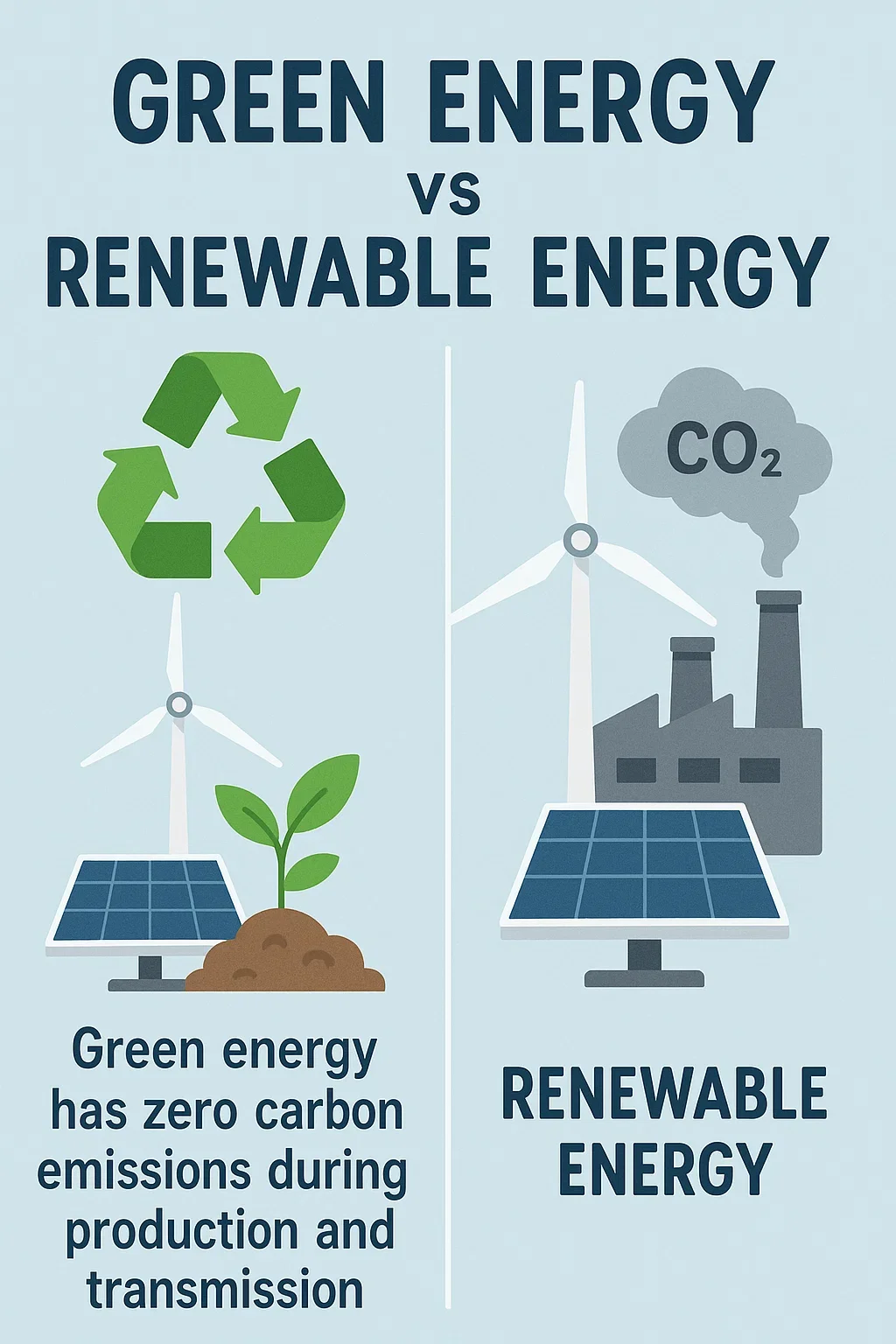Green Energy and Renewable Energy, what’s the difference?
As the world continues to grapple with climate change, energy conservation has become a top priority. In recent years, there has been a growing emphasis on sustainable energy sources that not only reduce our reliance on fossil fuels but also minimize our carbon footprint. Two terms often used interchangeably are "Green Energy" and "Renewable Energy." While they may seem similar, they have distinct meanings. In this blog, we'll delve into the definitions provided by the International Development Energy Association (IDEA) and explore the differences between these two vital concepts.
What is Green Energy?
According to IDEA, Green Energy refers to energy produced from renewable sources that meet specific criteria:
Renewable source: The energy must come from a natural, replenishable resource, such as solar, wind, hydro, or geothermal power.
Zero emissions: The production and consumption of Green Energy should not generate any greenhouse gas emissions during the entire lifecycle, including extraction, processing, transmission, distribution, and use.
Sustainable supply chain: The energy must be produced using sustainable practices throughout its value chain, from resource extraction to end-use.
In essence, Green Energy is a subset of Renewable Energy that emphasizes the minimization of environmental impact through reduced emissions and sustainable production methods.
What is Renewable Energy?
IDEA defines Renewable Energy as energy generated from natural resources that can be replenished over time. This category includes:
Solar: Energy harnessed from the sun's rays.
Wind: Energy generated by wind turbines.
Hydro: Energy produced from moving water, such as rivers or ocean tides.
Geothermal: Energy derived from heat from the Earth's core.
Biomass: Energy obtained from organic matter, like wood waste or agricultural residues.
While Renewable Energy sources are generally sustainable and environmentally friendly, they may not necessarily meet the stricter criteria for Green Energy. For instance, some renewable energy projects might rely on fossil fuels for extraction or processing, which could compromise their environmental credentials.
Key differences between Green Energy and Renewable Energy
In practice, Green Energy is often used to describe renewable energy sources that meet the specific criteria outlined above. Renewable Energy, on the other hand, encompasses a broader range of sustainable energy options.
Conclusion
As we strive for a more sustainable future, it's essential to understand the nuances between Green Energy and Renewable Energy. While both terms share the common goal of reducing our reliance on fossil fuels, the distinctions highlighted above demonstrate that Green Energy is a subset of Renewable Energy with stricter environmental standards. By promoting Green Energy initiatives, we can accelerate the transition towards a cleaner, more environmentally friendly energy landscape.
Sources:
International Development Energy Association (IDEA). "Green Energy and Renewable Energy Definitions."
National Renewable Energy Laboratory (NREL). "What is Renewable Energy?"
United States Environmental Protection Agency (EPA). "Renewable Energy."
